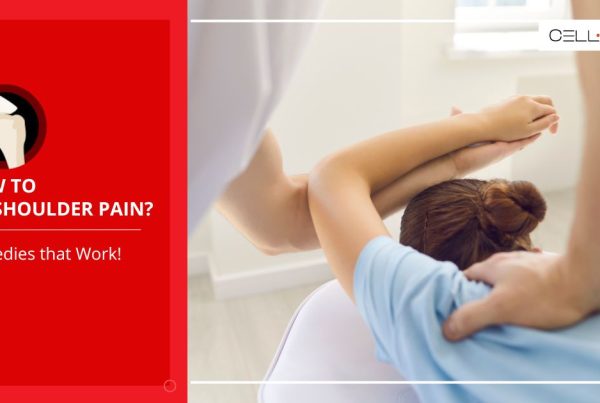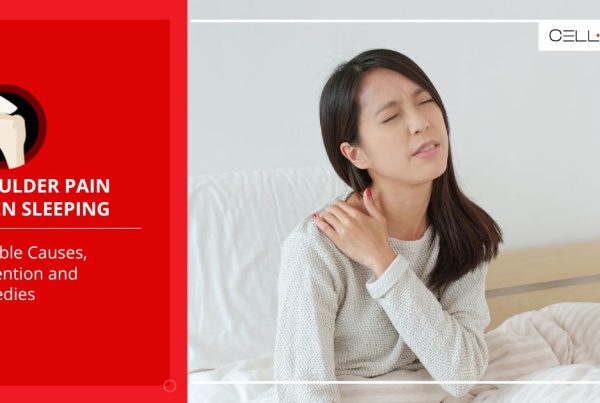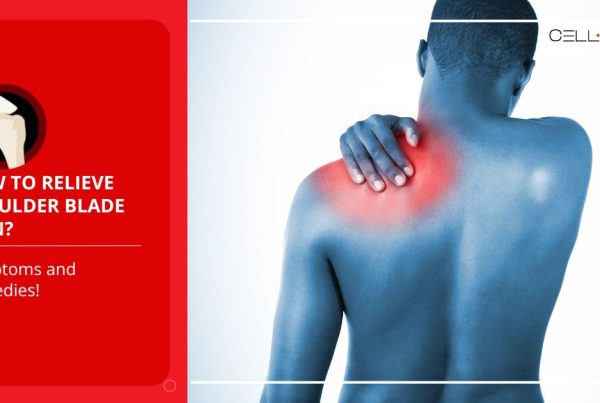Published on: November 28, 2024 | Updated on: January 18, 2025
Shoulder pain, one of the most common medical problems, affects many people. What causes shoulder pain? While frozen shoulder, arthritis, bursitis, rotator cuff tears, fractures, and dislocated shoulders are leading causes, some other problems could also be held responsible for shoulder pain.
According to studies, the lifetime prevalence of shoulder pain in the general population ranges from 6.9% to 67%—meaning that up to 67% of people experience shoulder pain at some point during their lives.
What Is Shoulder Pain?
The shoulder connects the upper arms to the body. It consists of three bones: the upper arm bone, called the humerus; the shoulder blade called the scapula; and the collarbone, called the clavicle.
Shoulder pain is common in adults, affecting about a whopping 70% of the population. These statistics make it crucial for you to understand shoulder pain, its causes, symptoms, and pain management.
The four joints in the shoulder make it the most mobile joint in the body, allowing a range of movements. The attached muscles keep our shoulder stable while the tendons—also called rotator cuffs attach these muscles to the shoulder bones.
Ligaments and cartilage provide more stability to the shoulders. A major trauma, injury, or strain to any of these vital structures can cause shoulder pain, with the most common being an injury to the shoulder capsule.
Symptoms of Shoulder Pain
Shoulder pain can cause a combination of symptoms. Some common symptoms include the following.
- Sharp pain that radiates to the arm
- Tenderness around the scapula
- Weakness in the shoulders and arms
- Restricted movement
- Difficulty rolling the shoulder
- A tingling sensation
- Shoulder stiffness
- Dull aching pain
- Muscle spasms
- Swelling
- Redness
- Drooped posture
What Causes Shoulder Pain?
Sitting in the same position with a bad posture, such as hunched shoulders, head tilted forward, and arms rounded for a long duration, causes shoulder pain. Improperly lifting weights also strains the shoulder muscles, causing pain.
Some other general causes are:
- Muscle strain
- Muscle spasm
- Ligament sprain
- Nerve compression
Besides these common causes, some underlying medical conditions that affect the shoulder bones, muscles, and joints also cause shoulder pain. These include the following.
- Rotator cuff injury
- Bursitis
- Arthritis
- Frozen shoulder
- Bone spurs
- Dislocated shoulder joint
Let’s understand more about these conditions and how they cause shoulder pain.
Rotator Cuff Injury
Among the most common medical conditions causing shoulder pain is rotator cuff injury. The rotator cuff is situated in the muscles and tendons surrounding the shoulder. Any tear to the rotator cuff tendon causes sharp pain.
Rotator cuff injury becomes more common with age, especially among people who consistently engage in overhead work, such as painters or carpenters.
A single blunt injury may also result from a rotator cuff tear. Symptoms include recurrent pain, cracking sounds when you move your arm, restricted movement, and muscle fatigue.
Bursitis
The bursa is a fluid-filled sac cushioning the shoulder joint. Pressure from repetitive movement causes inflammation of the bursa, which causes shoulder pain.
Prolonged pressure on the shoulder also results in restricted movement and muscle fatigue. Usual symptoms include redness, a heated sensation around the shoulder, and discoloration.
Arthritis
Arthritis is an autoimmune disorder that damages the cartilage inside the shoulder. The wear and tear of the shoulder cartilage produces friction, which causes shoulder pain, stiffness, and limited range of motion.
Frozen Shoulder
Frozen Shoulder, medically known as adhesive capsulitis, is another common problem causing shoulder pain. The condition is characterized by extreme stiffness of the shoulder joint.
It develops over time, that is, gradually, often after injuries that require you to keep your arm in the same position. For example, if you’ve had a recent fracture that requires a plaster cast for more than two weeks, you may develop a frozen shoulder.
Bone Spurs
Among the leading causes of shoulder pain is bone spurs, a condition that causes bony projections to protrude along the edges of the shoulder bone. This may happen due to osteoarthritis or aging.
The spur formation irritates the soft tissues, causing shoulder pain and stiffness. Restricted movement may accompany the condition. The bone spurs press on the nearby nerves and tendons, sending sharp radiating pain to the shoulders and arms.
Shoulder Dislocation
A sharp pain when moving your shoulders can be caused by the dislocation of the shoulder joint. The shoulder joint dislocation results from an injury where the upper arm bone pops out of the shoulder socket.
Noticeable swelling and bruising accompany a dislocated shoulder joint with intense pain and limited movement. Young adults and athletes are at a higher risk for shoulder joint dislocation.
How to Manage Shoulder Pain?
Once you learn what causes shoulder pain, it’s important to look into the most effective pain management techniques.
1. Adjust Your Posture
The most common causes of shoulder sprains and strains result from poor posture. Adjusting your posture relieves shoulder pain as the muscles don’t have to hold your arm and shoulder weight in an unnatural position.
Avoid hunched shoulders, rounder arms, and a forward head tilt. If your work requires a workstation, take regular breaks to stretch out your arms over the head.
Keeping the spine aligned relieves discomfort and pain in the shoulders from slouching. Also, small ergonomic changes such as neck pillows and back braces should be made to reduce postural stress from leaning forward at a desk.
2. Rest and Activity Modifications
Resting and avoiding strenuous activities is one of the best ways of managing shoulder pain. If you work a job that requires overhead lifting, request for time off or change of roles.
You should stop doing activities that aggravate the pain. Focus on resting for a faster recovery.
3. Physical Therapy
Physical therapy, a cornerstone in quick recovery, strengthens the muscles around the shoulder. To know the best shoulder exercises, consult a professional physical therapist who can guide you toward the path to a quick recovery.
You can also consult a general physical, who recommends a combination of lightweight, low-impact exercises that relieve pain.
4. Ice and Heat Therapy
If your shoulder pain results from a recent injury, it is recommended that you ice the area to numb the pain and reduce inflammation.
For the first 24 hours, ice the affected area for about 15 to 20 minutes every three to four hours. You should not place the ice directly on the skin as it presents the risk of frostbite. Instead, wrap it in a cloth or a towel.
Wrap Up
Besides the common causes of shoulder pain, numerous underlying medical conditions result in shoulder inflammation, pain, and limited range of motion.
If a serious underlying problem causes shoulder pain, the treatment should always be done under the supervision of a doctor or a professional who can correctly guide you toward recovery.
Diagnosis of shoulder pain involves a physical examination along with the patient’s history to factor out the causes of pain. Upon examination, the doctor may ask you to perform specific actions to assess the range of motion before making a treatment plan.
Sources
Footnotes
- Imagama S, Ando K, Kobayashi K, Seki T. Shoulder pain has most impact on poor quality of life among various types of musculoskeletal pain in middle-aged and elderly people: Yakumo study. Modern Rheumatology. 2019;30(4):1-15.
- Hodgetts CJ, Leboeuf-Yde C, Beynon A, Walker BF. Shoulder pain prevalence by age and within occupational groups: a systematic review. Archives of Physiotherapy. 2021;11:24.
- Susilowati IH, Kurniawidjaja LM, Nugraha S, Nasri SM, Pujiriani I, Hasiholan BP. The prevalence of bad posture and musculoskeletal symptoms originating from the use of gadgets as an impact of the work from home program of the university community. Heliyon. 2022;8(10).
- Geary MB, Elfar JC. Rotator Cuff Tears in the Elderly Patients. Geriatr Orthop Surg Rehabil. 2015;6(3):220–224.
- Banerjee M, Balke M, Bouillon B, Titze F, Shafizadeh S. Soft tissue injury of the shoulder after single non-dislocating trauma: prevalence and spectrum of intraoperative findings during shoulder arthroscopy and treatment results. Arch Orthop Trauma Surg. 2015;135(1):103-9.
- Le HV, Lee SJ, Nazarian A, Rodriguez EK. Adhesive capsulitis of the shoulder: review of pathophysiology and current clinical treatments. Shoulder Elbow. 2017;9(2):75–84.
References
- Overview: Shoulder Pain. InformedHealth.org. Accessed 09/15/2024.
- Anatomy, Shoulder and Upper Limb, Shoulder. StatPearls. Accessed 09/15/2024.
- Shoulder Pain in Adults. Mayo Clinic. Accessed 09/15/2024.
- Rotator Cuff Injury. Mayo Clinic. Accessed 09/15/2024.
- Bursitis in Shoulder. Cleveland Clinic. Accessed 09/15/2024.
- Shoulder Arthritis. Johns Hopkins Medicine. Accessed 09/15/2024.
- Frozen Shoulder. Mayo Clinic. Accessed 09/15/2024.
- Bone Spurs (osteophytes). Cleveland Clinic. Accessed 09/15/2024.
- Dislocated Shoulder. Mayo Clinic. Accessed 09/15/2024.
- Poor Posture Can Cause Shoulder Pain. Mayo Clinic. Accessed 09/15/2024.
- Understanding and Treating Pain Between Shoulder Blades. Pain Medicine Consultants. Accessed 09/15/2024.
- Best Physical Therapy Methods for Shoulder. OrthoBethesda. Accessed 09/15/2024.
- Injuries & Pain: When to Use Ice or Heat. UnityPoint Health. Accessed 09/15/2024.
- Why Does My Shoulder Hurt? WebMD. Accessed 09/15/2024.
CELLAXYS does not offer Stem Cell Therapy as a cure for any medical condition. No statements or treatments presented by Cellaxys have been evaluated or approved by the Food and Drug Administration (FDA). This site contains no medical advice. All statements and opinions are provided for educational and informational purposes only.
Dr Pejman Bady
Author
Dr. Pejman Bady began his career over 20 years ago in Family/Emergency Medicine, working in fast-paced emergency departments in Nevada and Kansas. He has served the people of Las Vegas as a physician for over two decades. Throughout this time, he has been met with much acclaim and is now the head of Emergency Medical Services in Nye County, Nevada. More about the doctor on this page.
Dr Pouya Mohajer
Contributor
Pouya Mohajer, M.D. is the Director of Spine and Interventional Medicine for CELLAXYS: Age, Regenerative, and Interventional Medicine Centers. He has over 20 years of experience in pain management, perioperative medicine, and anesthesiology. Dr. Mohajer founded and is the Medical Director of Southern Nevada Pain Specialists and PRIMMED Clinics. He has dedicated his career to surgical innovation and scientific advancement. More about the doctor on this page.









